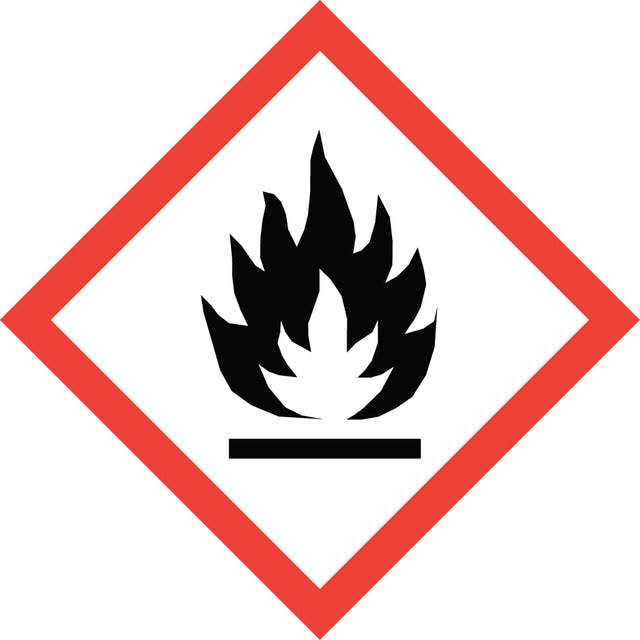选择尺寸
关于此项目
产品名称
乙腈, tested for PFAS Methods LiChrosolv®
InChI key
WEVYAHXRMPXWCK-UHFFFAOYSA-N
SMILES string
CC#N
InChI
1S/C2H3N/c1-2-3/h1H3
agency
suitable for EPA 1633
suitable for EPA 533
suitable for EPA 537.1
vapor density
1.41 (vs air)
vapor pressure
72.8 mmHg ( 20 °C)
assay
≥99.9% (GC)
form
liquid
autoignition temp.
973 °F
expl. lim.
16 %
refractive index
n20/D 1.344 (lit.)
bp
81-82 °C (lit.)
mp
−45 °C (lit.)
density
0.786 g/mL at 25 °C (lit.)
suitability
suitable for UHPLC-MS
application(s)
PFAS testing
Quality Level
正在寻找类似产品? 访问 产品对比指南
相关类别
General description
Testing for PFAS requires solvents, such as water, acetonitrile, and methanol of exceptionally high purity, which are utilized in both analytical and preparative stages of the analysis. The high sensitivity of liquid chromatography-mass spectrometry (LC-MS) instruments, combined with the need for trace-level detection of PFAS, necessitates the use of solvents that are free from PFAS contamination. Any presence of PFAS in these solvents can lead to misleading results, resulting in false positives or an overestimation of PFAS levels, ultimately compromising the validity of analytical results and conclusions. Therefore, ensuring solvent purity is paramount for accurate and reliable PFAS analysis.
LiChrosolv® solvents, tested for PFAS methods, are engineered to meet the demands of this critical application. Each batch undergoes rigorous testing against all analytes outlined in EPA methods EPA 533, EPA 537.1, and EPA 1633. These solvents are designed to minimize background interference and contain no PFAS compounds above the limit values defined by each EPA method. This ensures reliable and effective testing, facilitating the identification and quantitation of PFAS analytes while eliminating the risk of false positive or negative results in LC-MS/MS analysis.
Legal Information
Application
PFAS Testing Features:
- QC Batch Tested: 40 PFAS analytes tested according to EPA 533 (25 analytes), EPA 537.1 (18 analytes), and EPA 1633 (40 analytes).
- Lot to Lot Consistency: Multiple batches validated by a third-party accredited testing laboratory and internal laboratories.
Features and Benefits
- Application Security: Quality control on 40 PFAS analytes according to EPA 533, EPA 537.1, and EPA 1633.
- Time and Cost Savings: EPA 1633 requires batch validation unless the vendor tests for PFAS analytes listed in this method.
- Lowest Impurity Profile: Ensures an interference-free baseline.
- LC-MS Suitability: ESI/APCI (+) < 2 ppb; ESI/APCI (-) < 10 ppb.
- Minimized Contamination: Borosilicate glass bottles reduce contamination with metal ions.
- Trace Metal Impurity Control: Levels of trace metal impurities are minimized to <5 ppb, reducing metal ion adduct formation.
- Microfiltration: Solvents are filtered through a 0.2 μm filter to ensure purity.
signalword
Danger
Hazard Classifications
Acute Tox. 4 Dermal - Acute Tox. 4 Inhalation - Acute Tox. 4 Oral - Eye Irrit. 2 - Flam. Liq. 2
存储类别
3 - Flammable liquids
wgk
WGK 2
flash_point_f
35.6 °F - closed cup
flash_point_c
2.0 °C - closed cup
法规信息
商品
Sensitive PFAS testing can be performed with ultrapure water from a Milli-Q® IQ 7 system, which eliminates detectable PFAS for reliable LC-MS/MS results. See the science, see the proof.
LC-MS method separates 32 PFAS compounds in drinking water following EPA methods 533, 537, and 537.1. EPA 8327.
Learn how method EPA 533 is used for sample collection and preparation, featuring Supelclean™ ENVI-WAX™ SPE cartridges for LC-MS analysis on an Ascentis® Express PFAS HPLC Column.
LC-MS/MS determination of per- and polyfluoroalkyl substances (PFAS) in water samples using Supelclean™ ENVI-WAX™ SPE cartridges as per EPA Method 1633.
我们的科学家团队拥有各种研究领域经验,包括生命科学、材料科学、化学合成、色谱、分析及许多其他领域.
联系客户支持
